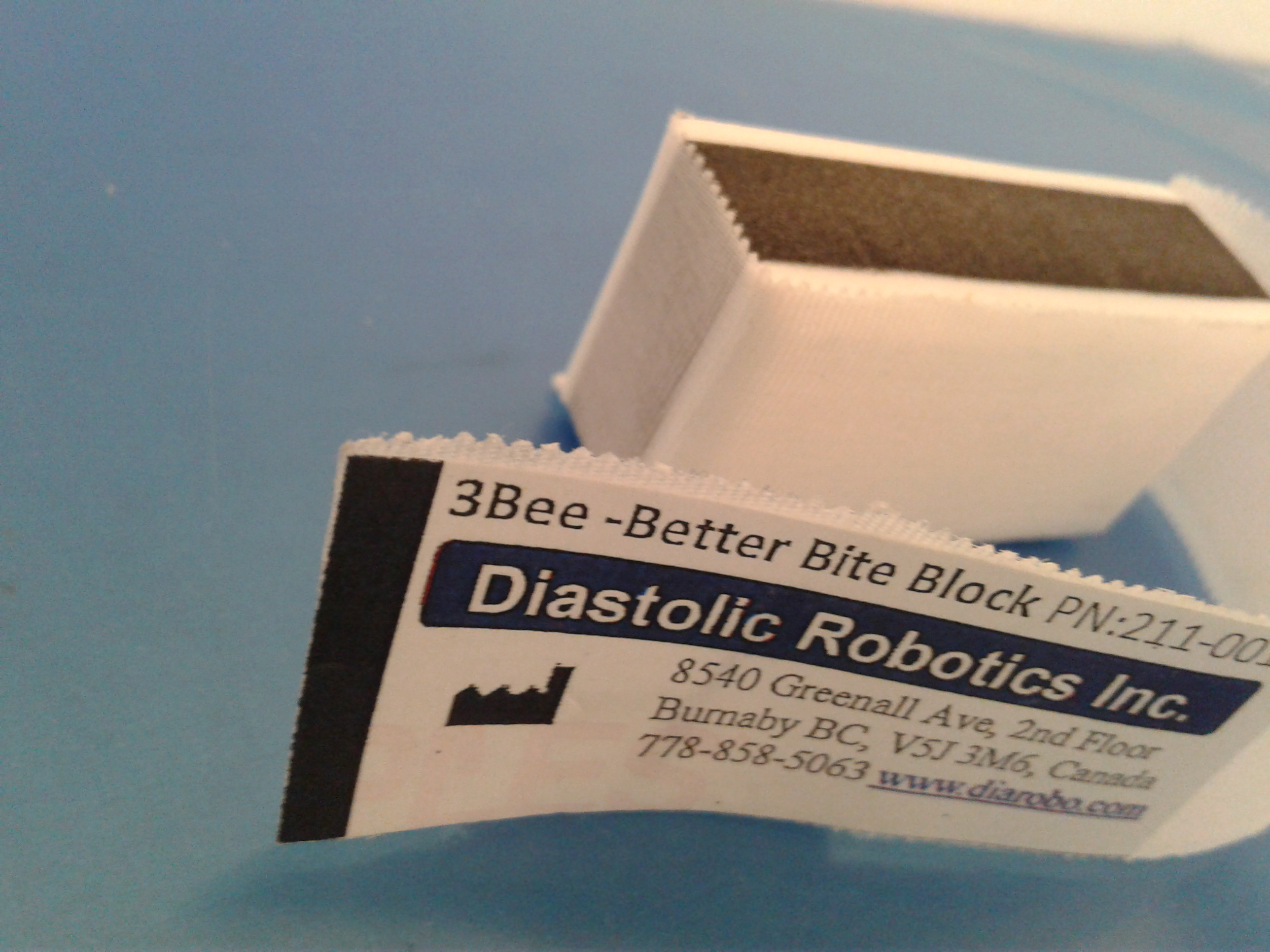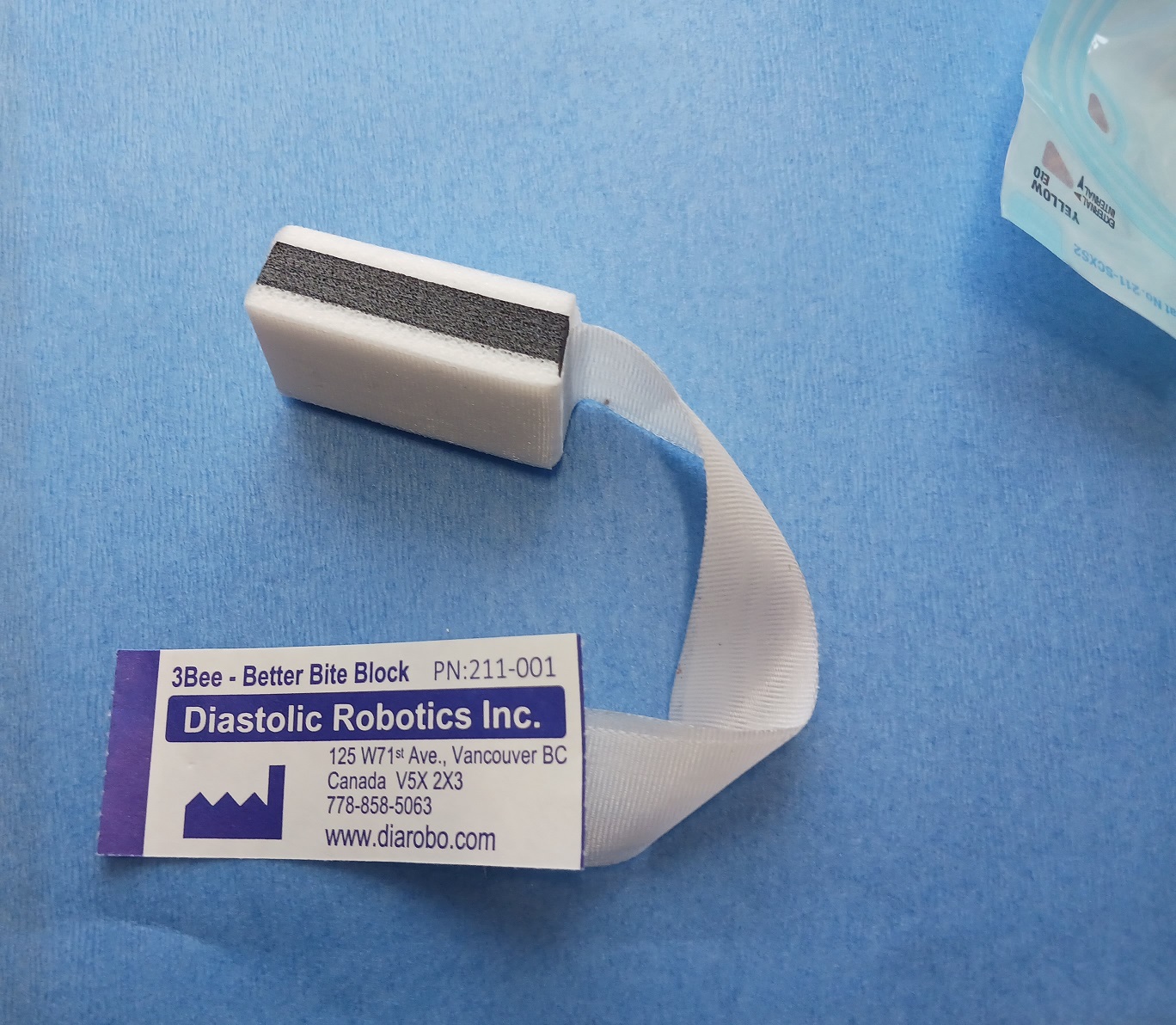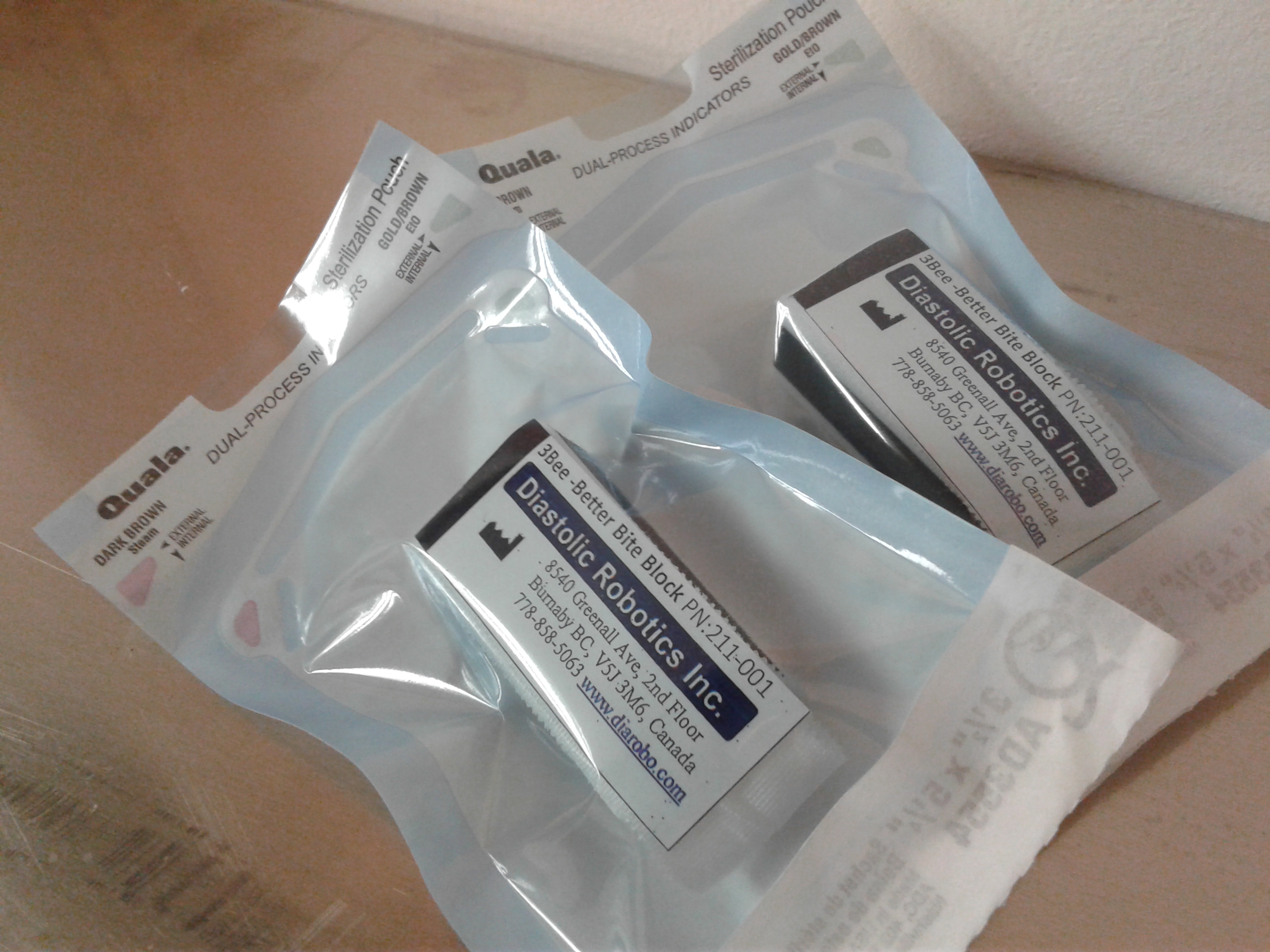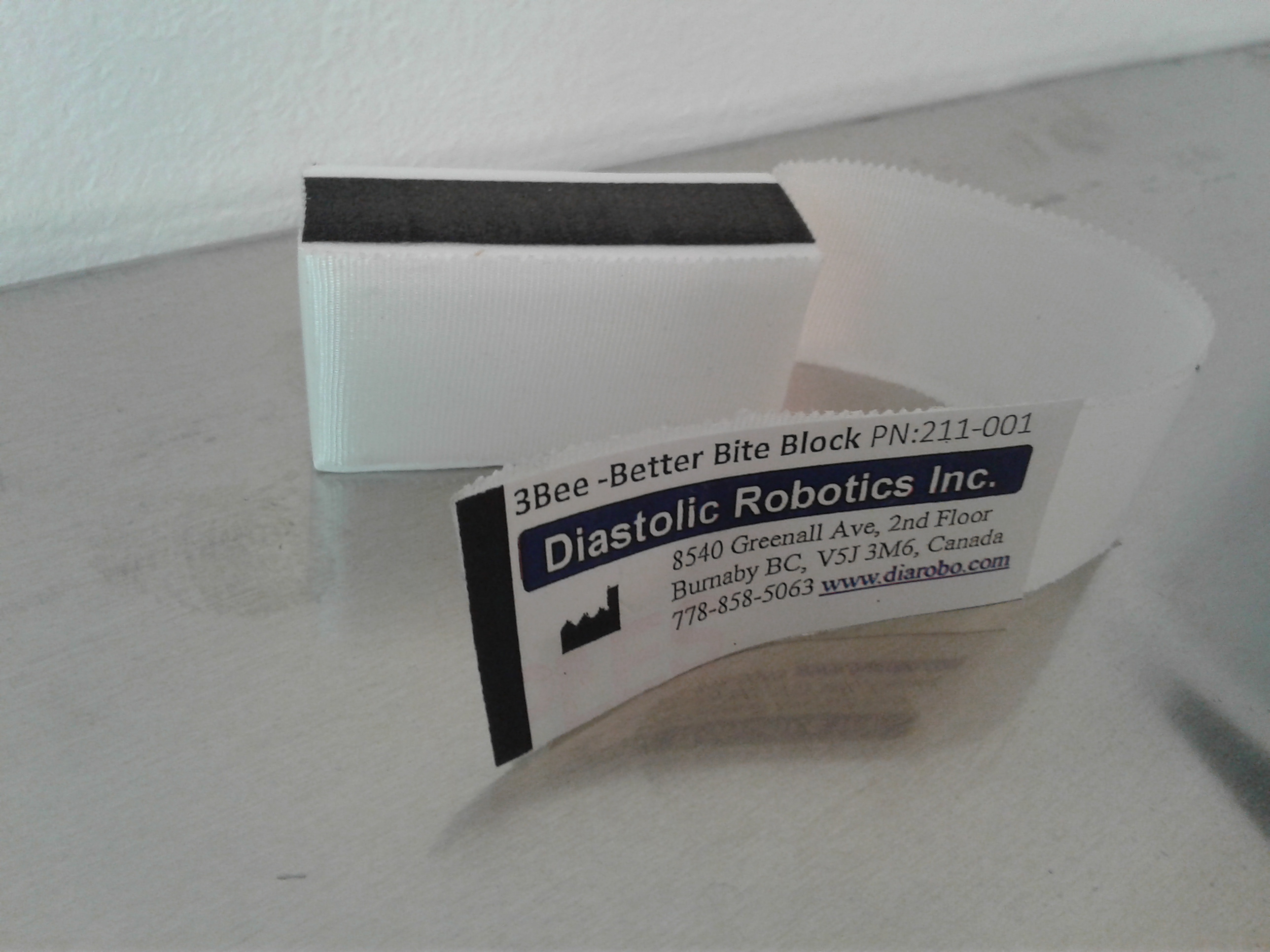3Bee - Better Bite Block
A Better Bite Block for reducing the incidence of patient injury due to emergence clenching. For application between the patient s teeth while emerging from anesthesia.
3Bee - Adult

p3Bee - Pediatric BBB

The p3Bee is trialing now! Please contact us at feedback@diarobo.com if interested.
Why worry?
Patients coming out of anesthesia tend to clench their teeth. Seemingly harmless, teeth-clenching can lead to:
- Broken teeth and related dental damage
- Soft tissue damage
- Negative pressure pulmonary oedema (NPPE): biting on the intubation tube closes the airway as the patient attempts to breathe, but creates a vacuum that pulls fluid into the lungs.
What to do?
To limit emergence clenching mortality, follow the Difficult Airway Society Guidelines for the Management of Tracheal Extubation" [Anaesthesia 2012, 67, 318–340] and use a bite block. Bite blocks can reduce and prevent patient injury due to teeth-clenching.
Traditionally, bite blocks have been made from rolled gauze or were made by using an oropharyngial airway (e.g. Guedel). Rolled gauze can be effective, but inconvenient and even dangerous. It requires preparation when time may be at a premium and risks being displaced and lost or swallowed leading to accidental airway obstruction.
Oropharyngeal airways may reduce NPPE but can still result in dental damage. Their hard plastic is tough on teeth. Biting can fracture Guedel airways and as reported in [Burton J et al, "Dental damage during anesthesia". Anaesthesia and Intensive Care, 1987:15:262-8] , 20% of cases of dental damage in that study was due to Guedel use.
The 3Bee – Better Bite Block
Diarobo's 3Bee – Better Bite Block is a better choice. 3Bee is made of bite-resistant material surrounding a compressible core. 3Bee is soft to reduce the chance of dental injury, yet firm enough to minimize the possibility of a patient's clenching closing their airway.
Removal of a liner exposes patient-safe tape, which can be used to temporarily attach the 3Bee to the patient or their airway to prevent displacement and loss of the device.


- 3Bee is sized to accommodate all endotracheal tubes and to not interfere with suctioning.
- 3Bee is made from non-toxic and latex-free materials.
- 3Bee is provided non-sterile, with an EtO sterilization pouch (as pictured in the first photo) for convenience.
Provisos
- Rx Only: US federal law restricts this device to sale by or on the order of a physician.
- Patents pending.
- Non-toxic
- Non-sterile